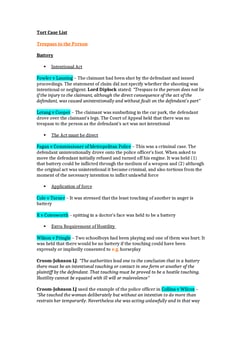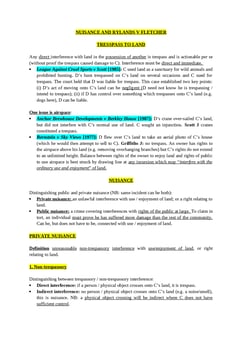Cassidy v Ministry of Health [1951] 2 KB 343
Judgement for the case Cassidy v Ministry of Health
Table Of Contents
KEY POINTS
If a primary tortfeasor’s negligence can be proven, in certain cases, their employer can be held accountable under the doctrine of vicarious liability. The doctrine provides that an employer is legally liable for the torts committed by their ‘servants’ while on the job. Under modern law, the analogous phrase would be ‘employee’
According to the concept of respondeat superior, employers are vicariously accountable for negligent acts or omissions committed by workers while performing employment-related duties (also known as "scope and course of employment").
During those times, the primary test for evaluating whether the primary tortfeasor was a servant was to check whether or not the employer had control over how the primary tortfeasor conducted their services. It is called the control test.
In the case of skilled workers, even though they can do their work in their own way, employers may still be held accountable for negligence. The reason the employers are responsible in these situations is not because they can control how the work is done - they frequently lack the knowledge to do so - but rather because they employ the staff, have chosen them for the work, and have the final sanction for good conduct in their hands, the authority of dismissal.
FACTS
The claimant was a patient in one of the hospitals run by the defendants. The claimant needed a standard procedure to set the bones in his wrist. However, the operation left his fingers stiff because of the negligence on the part of one of the doctors.
The claimant attempted to sue the Ministry of Health, in their capacity as an employer. The Ministry contended that they could not be held liable and that they had no vicarious liability, citing Collins v Hertfordshire, which found that a surgeon was not a 'servant' of his employer.
The defendant contended that the negligent doctor was not one of their employees because they had no control over how he performed his duties. The definition of 'servant' in the context of vicarious liability was the main source of contention in this case.
COMMENTARY
The defendant was found to be vicariously liable. Even if a person is highly qualified and performs specialized and technical work, this does not imply that he is not a servant. If someone was hired by the defendant and is fully incorporated into the defendant's business, such an individual is the defendant's servant.
In this instance, the doctors were incorporated into the hospital and appointed by the defendant, and not by the patient, to work there. Therefore, they were the defendant's servants.
It was stated in the judgment that, employers are liable in such cases not because they can control how the work is done - they often do not have adequate knowledge to do so, rather, it is because they are the ones who employ workers, choose them for tasks, have the ultimate sanction for their good behavior, and the power to dismiss them for work. Furthermore, if a patient chooses the doctor, the doctor will not be employed by a hospital, thus in such cases, the hospital may not be vicariously liable for the acts of their workers.
ORIGINAL ANALYSIS
The claimant underwent a routine operation on his hand. The operation was incompetently performed, and made the claimant's condition much worse.
He sued the health authority both in its own capacity, and as the employer of the medical staff involved under the principle of Vicarious Liability.
The question arose whether there was a `master-servant' relationship between the health authority and the surgeon. It was suggested by the Health Authority that a surgeon was not the `servant' of his employer, and his contract was a `contract for services' and not a `contract of service'.
The CA rejected the distinction, and decided that the heath authority in this case were the `masters' of people it employed on a routine basis, despite the professional nature of their duties.
Somervell LJ
Absence of control does not prevent their being “a contract of service,” e.g. a ship owner does not control how a ship captain manages the sailors and yet the captain is a servant.
It is impossible to give a precise definition of a “contract of service” and the test is really whether an ordinary person would recognise there to be one.
For Further Study on Cassidy v Ministry of Health
Need instant answers? Our AI exam tutor is here to help.
Ask questions 🙋 Get answers 📔 It's simple 👁️👄👁️
Our AI is educated by the highest scoring students across all subjects and schools. Join hundreds of your peers today.
Get StartedSimilar Cases
Related Product Samples
These product samples contain the same concepts we cover in this case.
| GDL Tort Law | Employer's Liability Notes (10 pages) |
| GDL Tort Law | Employers And Vicarious Notes (6 pages) |
| GDL Tort Law | Employers' Liability Notes (13 pages) |


 Since 2010, Oxbridge Notes has been a trusted education marketplace, supplying high-quality materials from top achievers at universities like Oxford, Cambridge, LSE, Harvard, and Yale.
Since 2010, Oxbridge Notes has been a trusted education marketplace, supplying high-quality materials from top achievers at universities like Oxford, Cambridge, LSE, Harvard, and Yale.